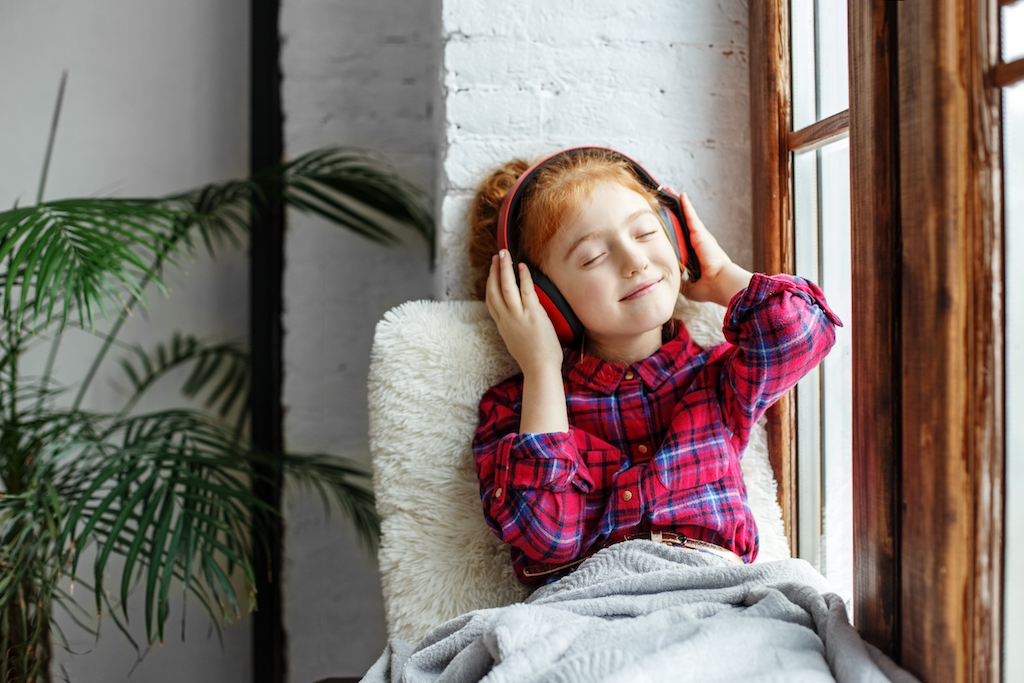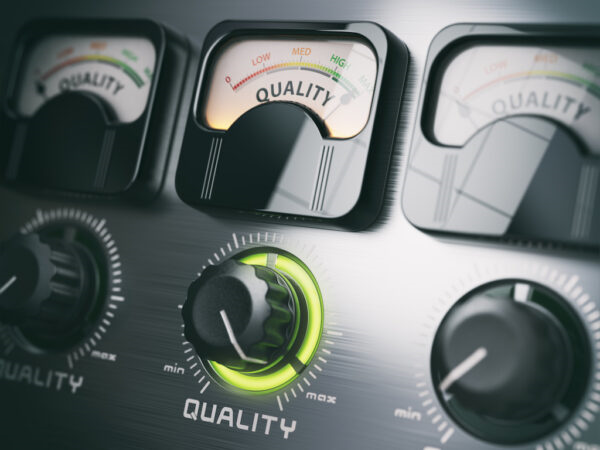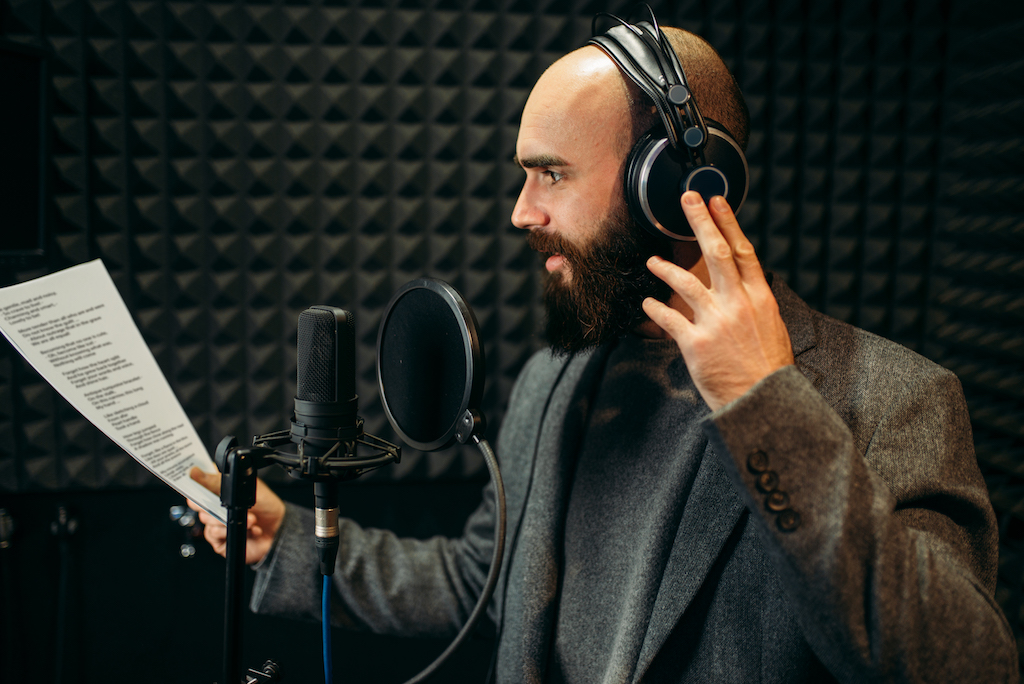These days, everyone’s got their earbuds in. On the subway, during exercise, while doing chores around the house. Audio consumption is booming, and evolving beyond the talk radio style of most podcasts to expand into the fictional territory of audiobooks. LibriVox is doing a good job of converting the world’s public domain literature into audiobooks. But – let’s face it – most audio stories set in 1884 are only really good for putting you to sleep! No wonder contemporary authors are opting to create more interesting, engaging audio storytelling. This might well be the start of the immersive audiobook revolution.
WHAT IS AN IMMERSIVE AUDIOBOOK?
An immersive audiobook is a cinematic retelling of a novel in audio-only format. While an audiobook is an audio-only reading of a novel, immersive audiobooks are more complex. They include original music and sound design and are often narrated by multiple voices. For example, a scene in an audiobook might be taking place in rainy Victorian London. An immersive audiobook would include the ambient sound of the rain, possibly some distant thunder. In the background, you might hear a horse and carriage pass by. Immersive audiobooks are typically available through all the same channels as regular audiobooks (Audible and other services).
WHY GO IMMERSIVE?
Immersive audiobook production is a hot space. Spotify recently announced the launch of their first ‘bookcast’ featuring Dolly Parton, which they say ‘blends audio storytelling with original music and sound elements in an immersive listening experience.’ Most people don’t have time to read books anymore, and the audiobook format allows the listener to remain entertained (and not fall asleep!) while commuting or doing chores.
Immersive sound design and music are essential to the success of audiobooks. Additional atmospheric, sound and cinematic scoring keeps the mood vibrant. Add in the resonant voiceover of a professional voice actor, and it happens. You get transported to a world that sounds and feels more like a movie than a book. “Miles away” from your grandmother’s ‘book-on-tape’ experiences!
Furthermore, podcasting has exploded in the last 10 years and continues to evolve. Although audiobooks with music and radio plays have been around for over 100 years, podcasts are the ones that eased access to audio-only storytelling. As a result, anyone who has now written a book can consider converting it into an immersive audiobook.

Fictional audio storytelling for children is also growing. Capturing their active imagination through immersive audiobooks has proven to be extremely beneficial for their mental health. And is also a great way to help them avoid constant screen-based entertainment (YouTube, gaming, social media). New, high-quality audio-only kids’ shows are popping up constantly, all of them featuring narration, music and sound design.
HOW DO YOU ESTABLISH THE QUALITY OF AN AUDIOBOOK PRODUCTION?

Agencies with experience in music production and sound design are a good place to start when looking for audiobook production. They offer services for scoring film and television and already have the instruments and sound libraries to create original music. Don’t let your hard-won story end up sounding like a boring museum tour cassette. Get it done right by those with trained ears!
Telling a story using audio-only is a little different than a video with a soundtrack. In immersive audiobooks, background sounds can become a distracting element to the listener. That is why precisely balanced volume levels are important. In other words, good judgement is at the heart of immersive audiobook production. Anyone can download a public domain music track. We can loop it for 10 minutes under a dramatic scene in an audiobook and call it ‘immersive’. But the average listener can tolerate only about 2 minutes of looped audio. After that, it starts to sound too samey and distracting. On the other hand, well-crafted immersive storytelling takes advantage of many elements to activate the imagination of the listener. Take into consideration factors like perfect timing, attention span and ear fatigue, and transport your listener into another dimension.
HOW DO YOU CREATE AN IMMERSIVE AUDIOBOOK?
When creating a high-quality, immersive audiobook with music, the following steps are necessary:
- voiceover recording
- narration editing
- post-production (noise reduction, EQ, compression)
- chapter splitting
- music & SFX composition/placement
- mixing

Most authors who have not already recorded an audio-only version of their book would start by booking studio time. The next step would be finding a voiceover artist to read their book or even narrate it themselves. Once the voiceover recording is complete is time for the audio editor to intervene. His role is to make sure the audio sounds clean, appropriately paced and split into the relevant chapters. Then, the immersive audio aspect begins.
Two terms before we continue: scoring is adding or writing music to be placed beneath the narration where appropriate. Sound design is adding sound effects and ambience, and also adjusting volume levels, panning, compression and EQ so that the final mix sounds perfect. Both are essential elements in creating an immersive audiobook.
Typically, listening to an audiobook takes place at a rate of around 10 000 words per hour (wph). It is not feasible to treat an entire 100 000-word book with 10 hours of both music and sound design. The result would be overbearing and very unpleasant. It might be appropriate to treat only 20% of the total running time of a typical novel. The author might have preferences regarding the timing of these immersive passages. The tone and style are also important to create the mood they aim to convey. Once these details are communicated clearly, the audiobook producer would begin the final mix, finally delivering all the correctly formatted files required for submission to Audible and other audiobook download sites.
IMMERSIVE AUDIOBOOK- PROMISING TIMES
It’s an exciting new time. Throughout history, we’ve seen the format of books change. From clay tablets and papyrus to the printing press and digital files, we’ve now moved into the golden age of on-demand audio. It’s been over 100 years since the first audiobooks were recorded. A century in which the distribution of audiobooks has been controlled by those with access to the means of production. Now, for the first time, independent and unpublished authors themselves can produce audiobooks. They can select music on their terms and curate them to cater for certain audiences. For writers of fiction, this is a promising new time to get in touch with an immersive audiobook production studio today.
Bogdan Bratis
CEO & Founder of Saspod. Podcast Producer & Digital Marketing Expert. I'm based in Glasgow, where on the side I play keyboard in function bands throughout Scotland, and I'm addicted to coffee.


Comments
No comments yet!